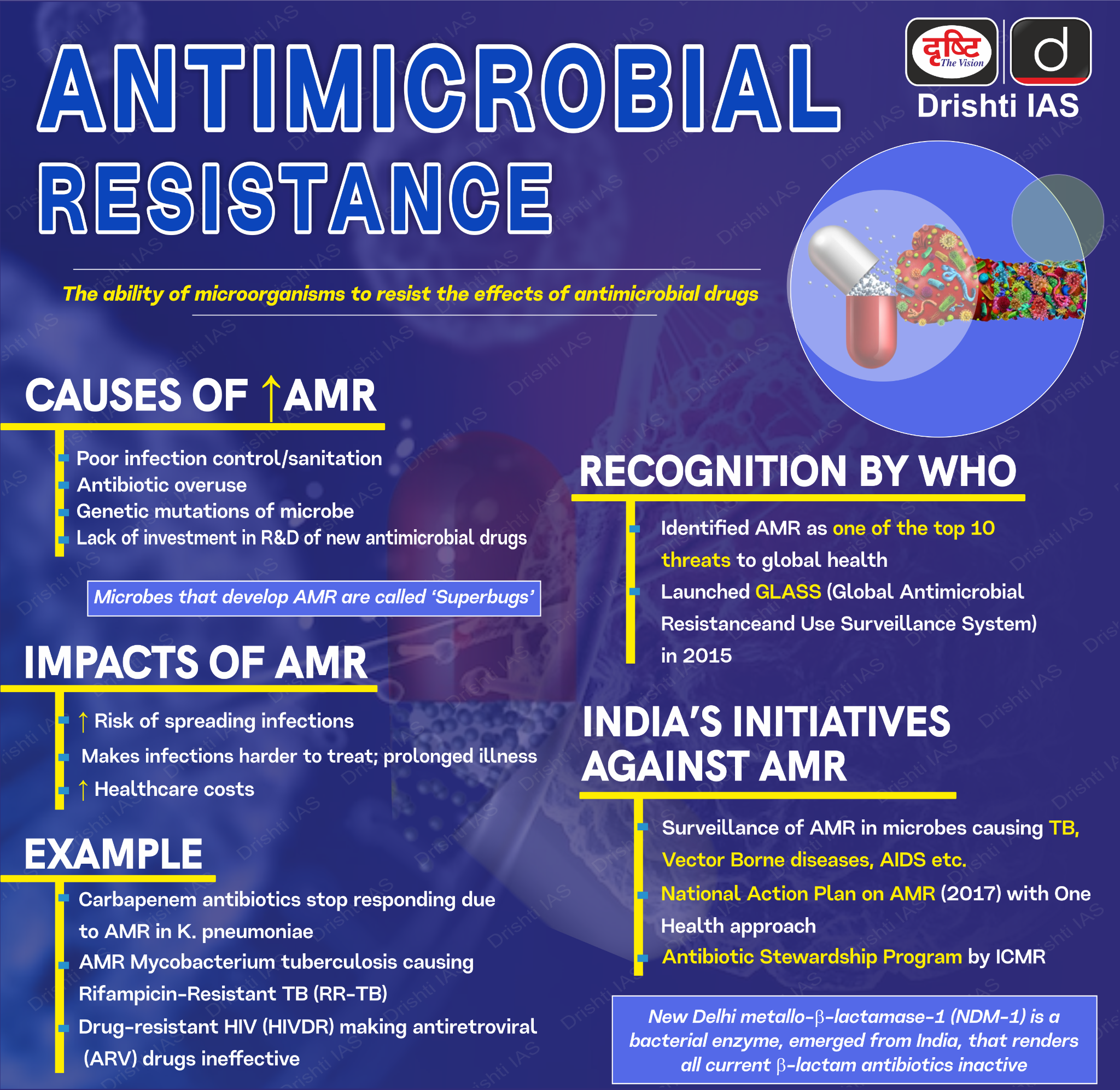European Honeybees as Biomonitoring Agents for AMR | 11 Sep 2023
For Prelims: European honeybees, Behaviour of Honeybee, IUCN Red List
For Mains: Antimicrobial Resistance and its Impacts
Why in News?
A recent study has revealed an unconventional yet efficient method for monitoring the proliferation of antimicrobial resistance (AMR) in urban areas: the utilization of European honeybees as biomonitoring agents.
What are the Major Highlights of the Research?
- European honeybees serve as a unique environmental proxy, effectively "crowdsourcing" data as they interact with contaminants in various urban elements such as soil, dust, air, water, and pollen during their foraging activities.
- Their short lifespan, around 4 weeks, allows them to provide real-time data on the state of the environment concerning antimicrobial resistance.
- Researchers have shed light on the significance of these bees in assessing pollution that may pose risks to human health. They analyzed the gut bacteria of 144 bees and identified Class 1 integrons (intI1) as a universal marker for tracking AMR.
- Surprisingly, around 52% of the bees carried intI1 in urban areas.
- Integron is a mobile DNA element that can capture and carry genes, particularly those responsible for antibiotic resistance.
- Furthermore, the researchers examined eight bees from each of the 18 hives owned by citizen-scientist beekeepers in Greater Sydney, Australia.
- 80% of these bees across all hives tested positive for one or more AMR targets.
- Higher concentrations were observed near bodies of water like dams and lakes.
What are European Honeybees?
- About:
- European honeybees (Apis mellifera) commonly referred to as the Western honey bee, possess two pairs of wings and usually display black or brown coloring with distinctive yellow stripes on its abdomen.
- They prefer to nest in a cavity such as a hollow tree or house wall.
- They are assessed as "Data Deficient" on the IUCN Red List.
- European honeybees (Apis mellifera) commonly referred to as the Western honey bee, possess two pairs of wings and usually display black or brown coloring with distinctive yellow stripes on its abdomen.
- Distribution:
- The species lives predominantly in managed bee colonies throughout Europe, although there are potentially feral and wild bee colonies found in a wide range of habitats.
- Generally, the species can be found to inhabit temperate forests, grasslands and even semi-deserts.
- The species lives predominantly in managed bee colonies throughout Europe, although there are potentially feral and wild bee colonies found in a wide range of habitats.
What is the Social Structure and Behaviour of Honeybee?
- Social Structure:
- Among them, queen bees, the fertile females, develop into the largest individuals.
- Drones, which are the males, have a medium build and notably larger eyes compared to females.
- Worker bees, smaller sterile females, are equipped with barbed stingers and possess unique hind legs utilized as pollen baskets.
- Behavior:
- Communication: They communicate through a complex system of dance called “waggle dance” to relay information about food sources and hive conditions.
- Hive Construction: Bees construct intricate hexagonal honeycomb structures made of beeswax to store honey, pollen, and raise brood.
- Pollination: While foraging for nectar and pollen, honeybees unintentionally pollinate many plant species, aiding in plant reproduction.
What is Antimicrobial Resistance?
Note: A United Nations Environment Programme report in February 2023 warned that the unchecked rise of AMR could lead to up to 10 million deaths annually by 2050.
UPSC Civil Services Examination, Previous Year Questions (PYQ)
Q. Which of the following organisms perform a waggle dance for others of their kin to indicate the direction and the distance to a source of their food? (2023)
(a) Butterflies
(b) Dragonflies
(c) Honey Bees
(d) Wasps
Ans: (c)
Q. Consider the following kinds of organisms: (2012)
- Bat
- Bee
- Bird
Which of the above is/are pollinating agent/agents?
(a) 1 and 2 only
(b) 2 only
(c) 1 and 3 only
(d) 1, 2 and 3
Ans: (d)
Q. Which of the following are the reasons for the occurrence of multi-drug resistance in microbial pathogens in India? (2019)
- Genetic predisposition of some people
- Taking incorrect doses of antibiotics to cure diseases
- Using antibiotics in livestock farming
- Multiple chronic diseases in some people
Select the correct answer using the code given below.
(a) 1 and 2
(b) 2 and 3 only
(c) 1, 3 and 4
(d) 2, 3 and 4
Ans: (b)
Mains
Q. Can overuse and free availability of antibiotics without Doctor’s prescription, be contributors to the emergence of drug-resistant diseases in India? What are the available mechanisms for monitoring and control? Critically discuss the various issues involved. (2014)

